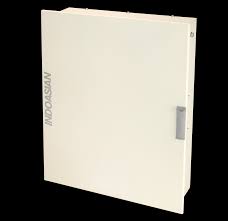
One of the most vital components of an electrical system is the distribution board. It assists in controlling the power running inside the building and prevents the system from overloading.
It is the main power supply for any residential or commercial building to which the main cable is attached. After that, using these main cables, the power is distributed via breakers to the secondary circuits throughout the building, such as lights and plugs.
Distribution boards contain circuit breakers, fuses, and other protective devices that prevent overloading & short circuits. They also provide a means for isolating circuits for maintenance or repair purposes.
They come in different sizes according to their usage in residential and industrial facilities. Therefore, choosing the perfect distribution board for your systems is critical to ensuring they are efficient & safe.
Let us check out some critical factors that one should consider while choosing the distribution board for their electrical system.
Tips For Choosing Distribution Boards For Electrical Systems
-
Determine Your Electrical Load Requirements.
It is the first step that everyone must consider before choosing a distribution board. Determine the load capacity requirement of your building’s electrical system and select a distribution board that meets the requirement.
The load capacity is the maximum amount of electricity the board can handle without overloading. Overloading can lead to fire or other damage. So, choose a distribution board with an appropriate load capacity to avoid faults.
-
Consider The Number And Type Of Circuits.
Every circuit has its type and number. Choosing the distribution board according to the circuit’s type and number will help you select the right one.
Consider that the board has enough circuit breakers or fuses to accommodate all the circuits in your system. It is also essential to consider the type of circuit breakers and fuses required for your system.
-
Select The Ideal Type Of Distribution Board.
Different types of distribution boards are suitable for various industrial and residential requirements. For example, single-phase distribution boards are ideal for small residential buildings.
Three-phase distribution boards are best suited for commercial and industrial buildings with high electrical loads. The sub-main boards are used to distribute power to secondary distribution boards.
-
Consider The Location And Enclosure Of The Distribution Board.
These are also critical factors to consider before selecting distribution boards. Choose the location of the board in a well-ventilated area so that it can be easily maintained and repaired. The enclosure should also be made of durable materials that protect against accidental contact with live parts.
-
Ensure Compliance With Safety Standards.
Before choosing the distribution board, ensure it meets all the relevant safety standards and regulations. Install the board under a qualified electrician’s guidance and ensure it undergoes regular inspection to ensure it remains in safe working order.
Conclusion
In conclusion, choosing the ideal distribution board for your system is crucial. Check out IndoAsian for high-quality, reliable distribution boards that meet your electrical system requirements.
